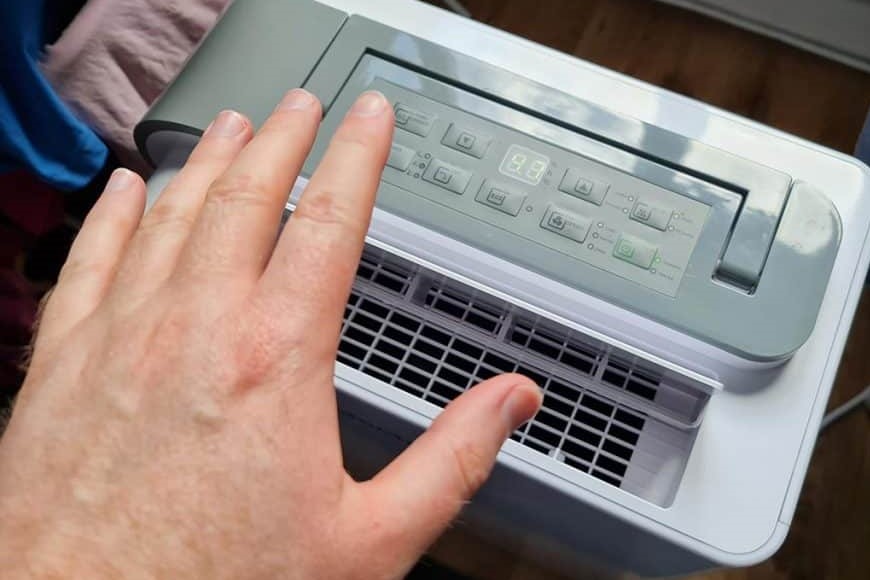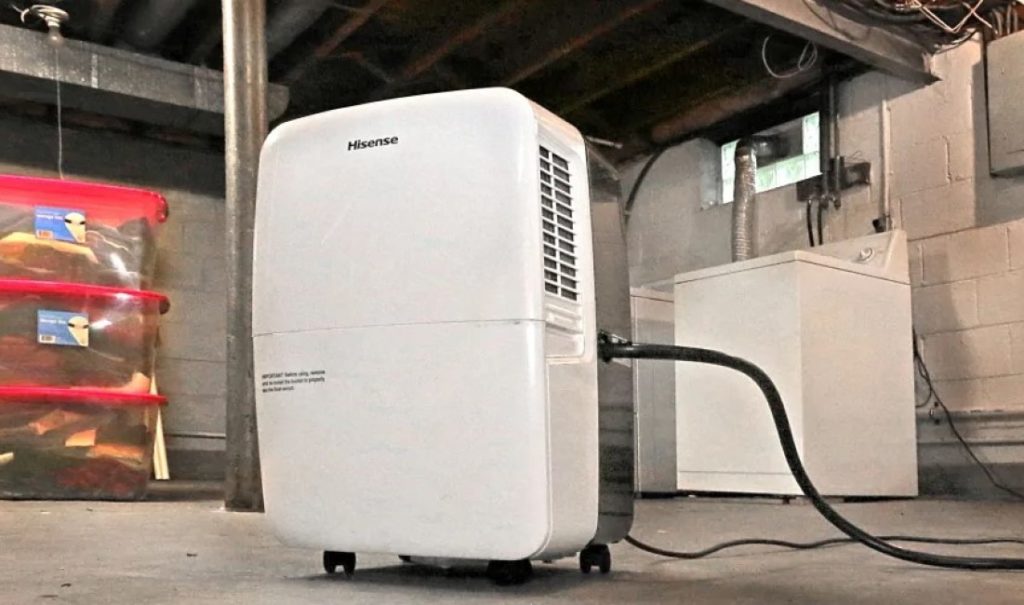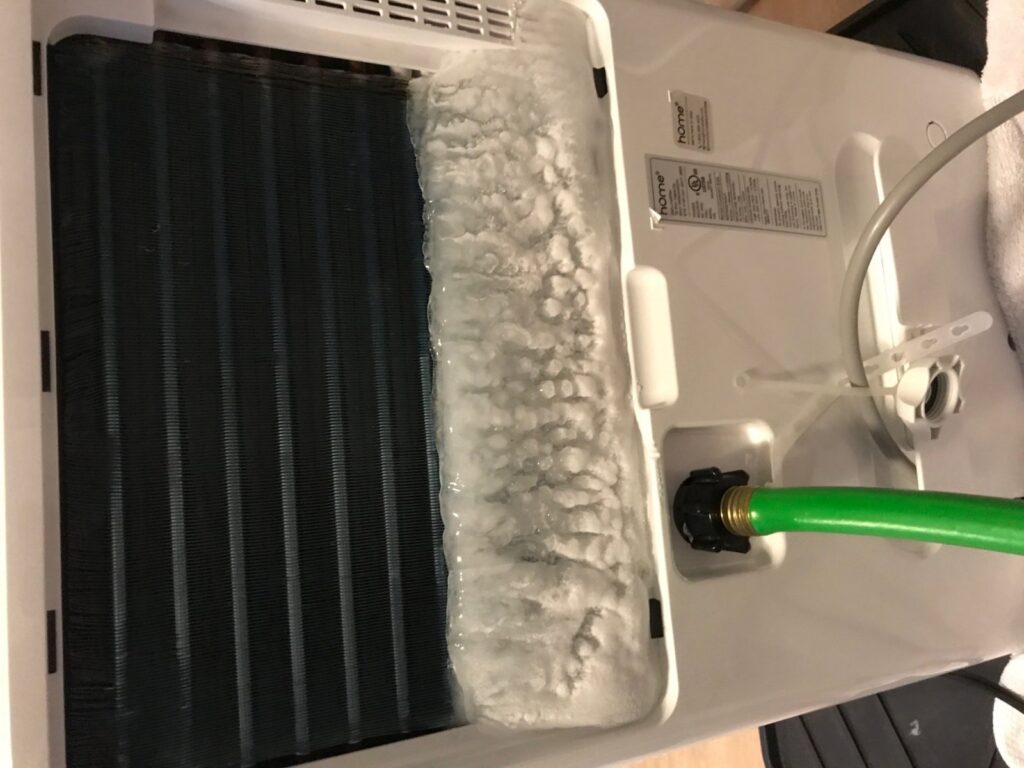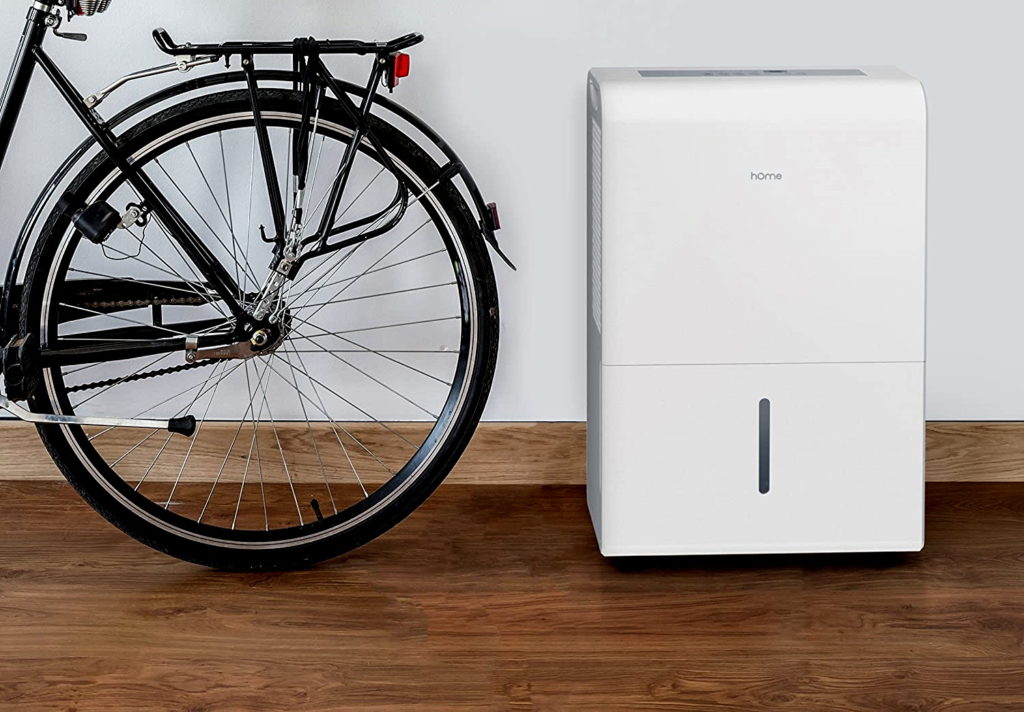

Dehumidifiers are compact in-home appliances that can increase the comfort of your residence any time of year, but especially during high-humidity weather. They’re also great to keep in rooms that struggle with high humidity levels, such as basements, or even when faced with unexpected flooding due to storms or any home problems. If you’ve ever wondered: “How does a dehumidifier work?” and whether they’re right for you and your home, then keep reading to learn more about dehumidifiers.
Indoor humidity levels have a lot of impact on various aspects of your home and life. Humidity levels show much moisture and water is held in the air. If the air has 100% humidity, that’s when it can cause rain outside. Indoors, a comfortable level of humidity is usually around 50%, but this can also change depending on the temperature as well. When it’s cold outside, the air can be too dry, so you may need a higher humidity level to increase the comfort of your home. But when the temperature is really hot outside, the humidity may need to be lowered, in order to help your home stay cool. Humidity can swing between 30% and 60% in homes, and most homeowners will find these levels perfectly comfortable. But if it goes below 30% or above 60%, this can sometimes cause problems. The good news is that if your home tends to be too humid in the summer months, just running your air conditioner will naturally lower the humidity level.
For homes that don’t have an AC unit or need even more help lowering the humidity level, as well as for handling rooms that are struggling with humidity levels, or if you’re simply dealing with flooding issues, a dehumidifier may be the best solution to your problems.
If the humidity level is too high in your home, it can impact your comfort. This is because your skin relies on evaporating sweat to cool your body, but when the humidity is too high, the sweat on your skin can’t evaporate, leaving you hot, sweaty, and uncomfortable. High humidity in your home can also cause a variety of other problems in your body, too, including but not limited to: fatigue, headaches, trouble sleeping, worsening asthma or allergies, raising blood pressure, increased viruses, and other respiratory issues. As for your house, high humidity can cause mold and mildew to grow, which can further impact the health of you and your friends and family. It can also cause paint and wallpaper to peel, cause some plants to wilt, make your windows and doors stick, damage your electronics, and increase pests and insects in your home as well as dust mites.
Besides all of that, increased humidity can put extra strain on your air conditioner. This is because your AC unit cools the air by removing moisture from the air, and so the more moisture there is, the harder it has to work to cool your home.
Humidity may keep your home comfortable, but excess humidity can cause a ton of problems that most homeowners don’t ever want to deal with.
Dehumidifiers pull moisture out of the air in order to reduce the humidity level of a space. You can use a small, portable dehumidifier, or even install a whole-house dehumidifier, or purchase a commercial dehumidifier for large jobs. Dehumidifiers use refrigerant to pull moisture out of the air. Inside the dehumidifier, there’s a fan that pulls air from the room into the unit. When the air is inside the dehumidifier, it comes into contact with the cooling coils, which are filled with the refrigerant. Because the coils are so cold due to the refrigerant, the moisture in the air condenses on the coils and then becomes water droplets. Once the moisture has liquefied, it drops into the dehumidifier’s reservoir, which stores all the removed water. When the reservoir is full, it needs to be emptied, either by pulling it out and pouring out the water or by connecting a hose to automatically drain the reservoir when it reaches a certain level. Then the reheater in the dehumidifier raises the temperature of the dry air to match the room temperature before releasing it once more into space.
There are other kinds of dehumidifiers, too, such as desiccant dehumidifiers. These work in a different way by using desiccant, which is a substance that absorbs water molecules, thereby reducing the humidity in a space. You can purchase desiccant packets to dry a small area, such as a closet. A desiccant dehumidifier works by pulling the room air over a desiccant and then releasing the dehumidified air. This kind of dehumidifier is really good at handling small spaces but is not the best choice for larger areas or larger jobs.
Many dehumidifiers come with humidistats, which measure the amount of humidity in the air so you can decide if you need more or less humidity in your space.
There are a few aspects you should keep in mind before purchasing a dehumidifier. The first one is the type: most people will do well with a traditional dehumidifier over a desiccant one, and they are very easy to find when shopping in almost any appliance store.
After that, you’ll need to decide on the capacity of your dehumidifier. The capacity will tell you how much water, typically in pints, it can remove from the air in a 24-hour period (this is called PPD, or pints per day.) If you have a lot of humidity that needs to be removed, or you have a large space, you’ll need a dehumidifier with a larger capacity.
If you need to remove humidity in your entire home, then consider purchasing a whole-house dehumidifier. This is an appliance that is built into your home’s HVAC system and typically requires professional installation. But once installed, you can easily control the humidity level of your entire home all year long.
Humidity levels can have a large impact on your own personal comfort as well as keeping your home in good shape. If you struggle with too much humidity in a specific room or even in your entire home, then purchasing a dehumidifier can help alleviate your problems and bring better comfort to your residence. There is a variety of models and sizes of dehumidifiers on the market, but knowing how a dehumidifier works is the first step to understanding, which unit will work the best for your needs.





